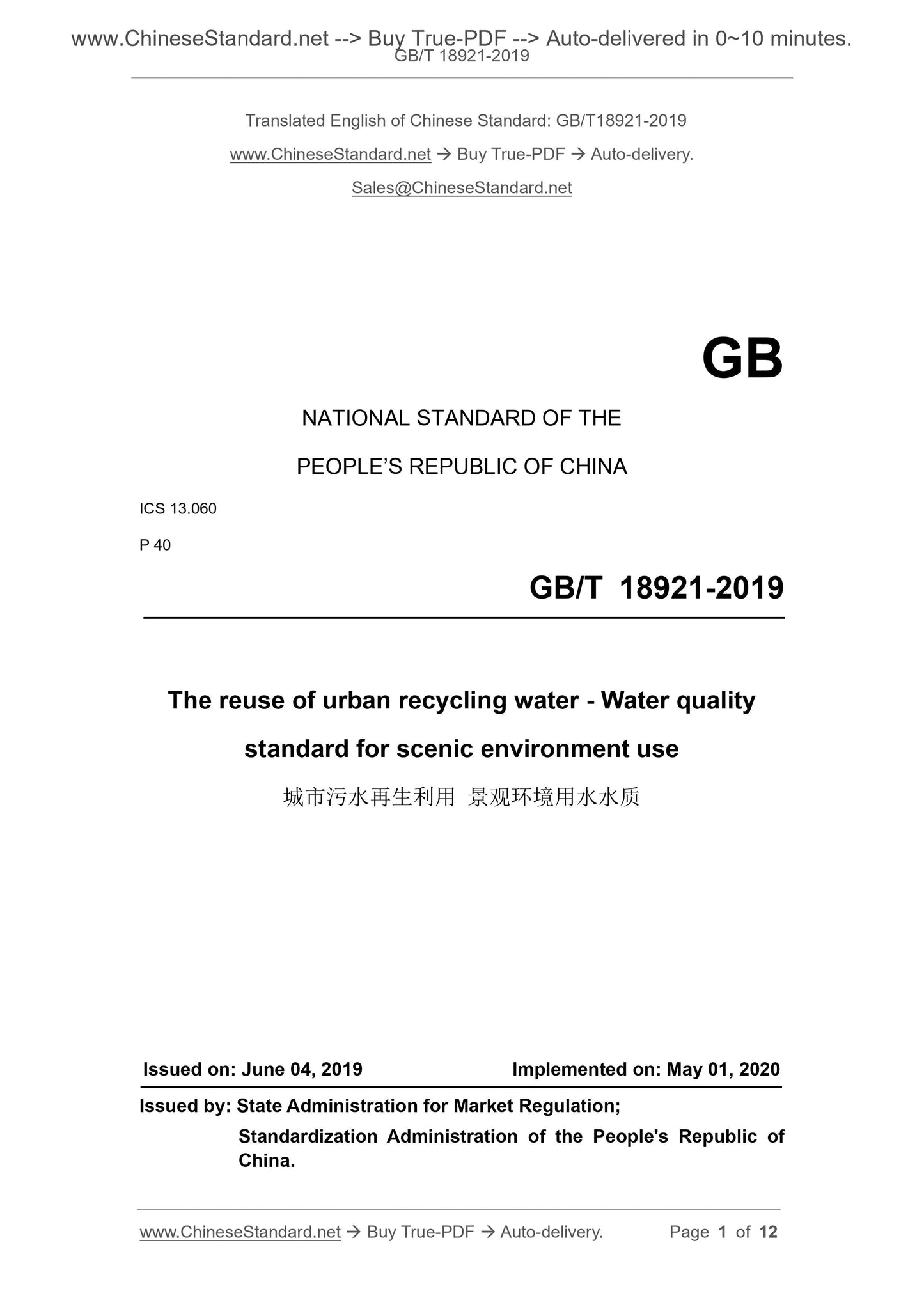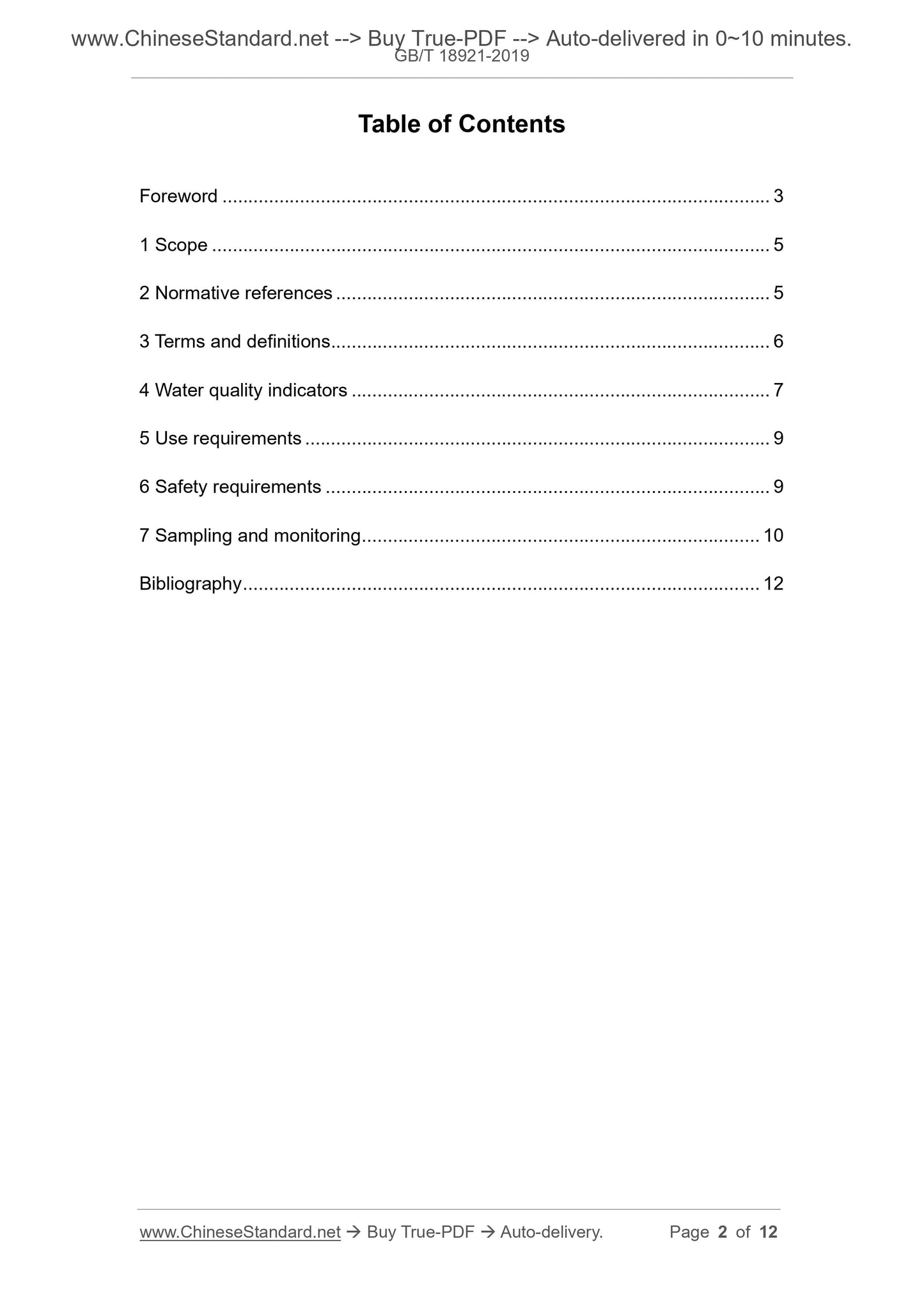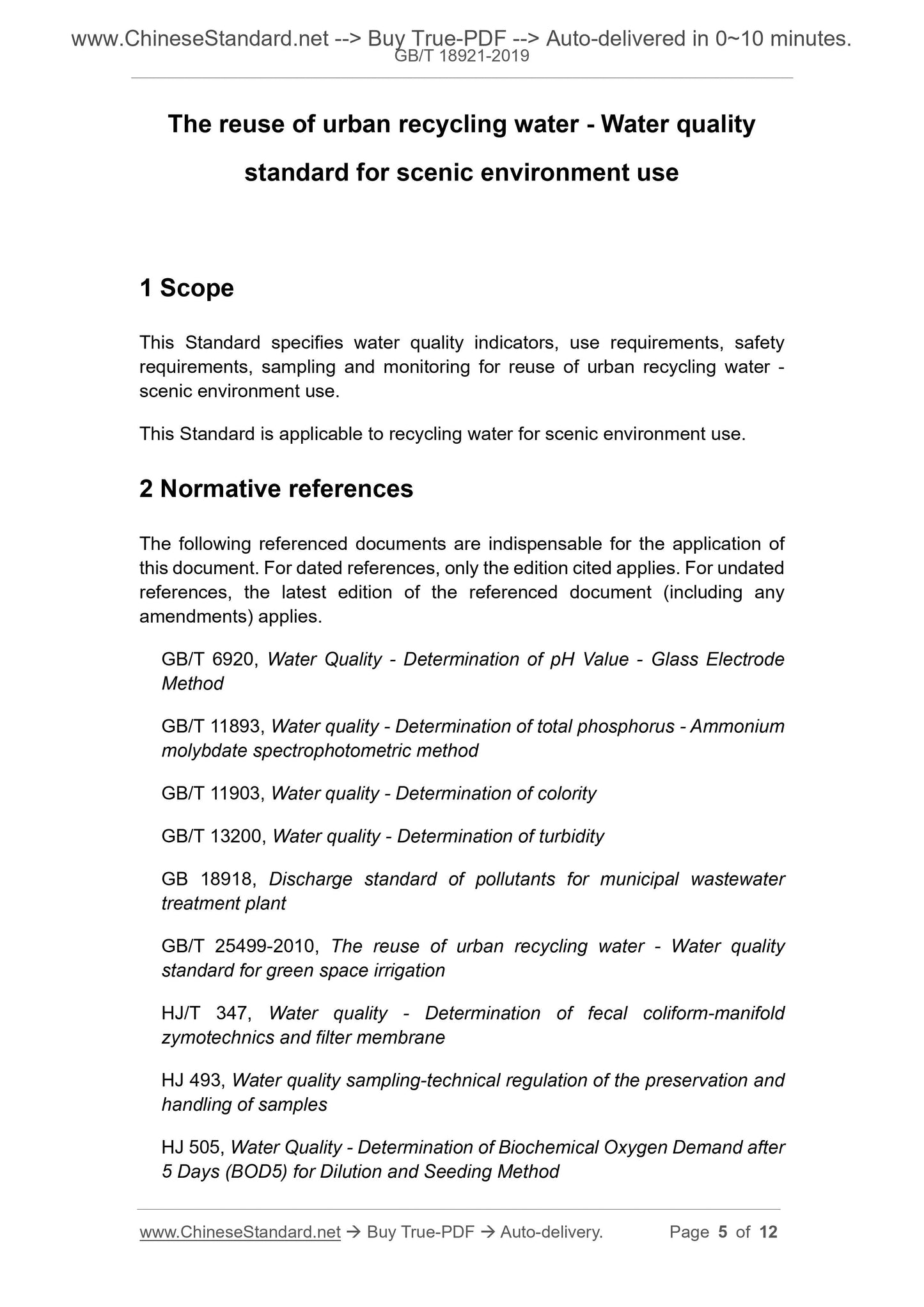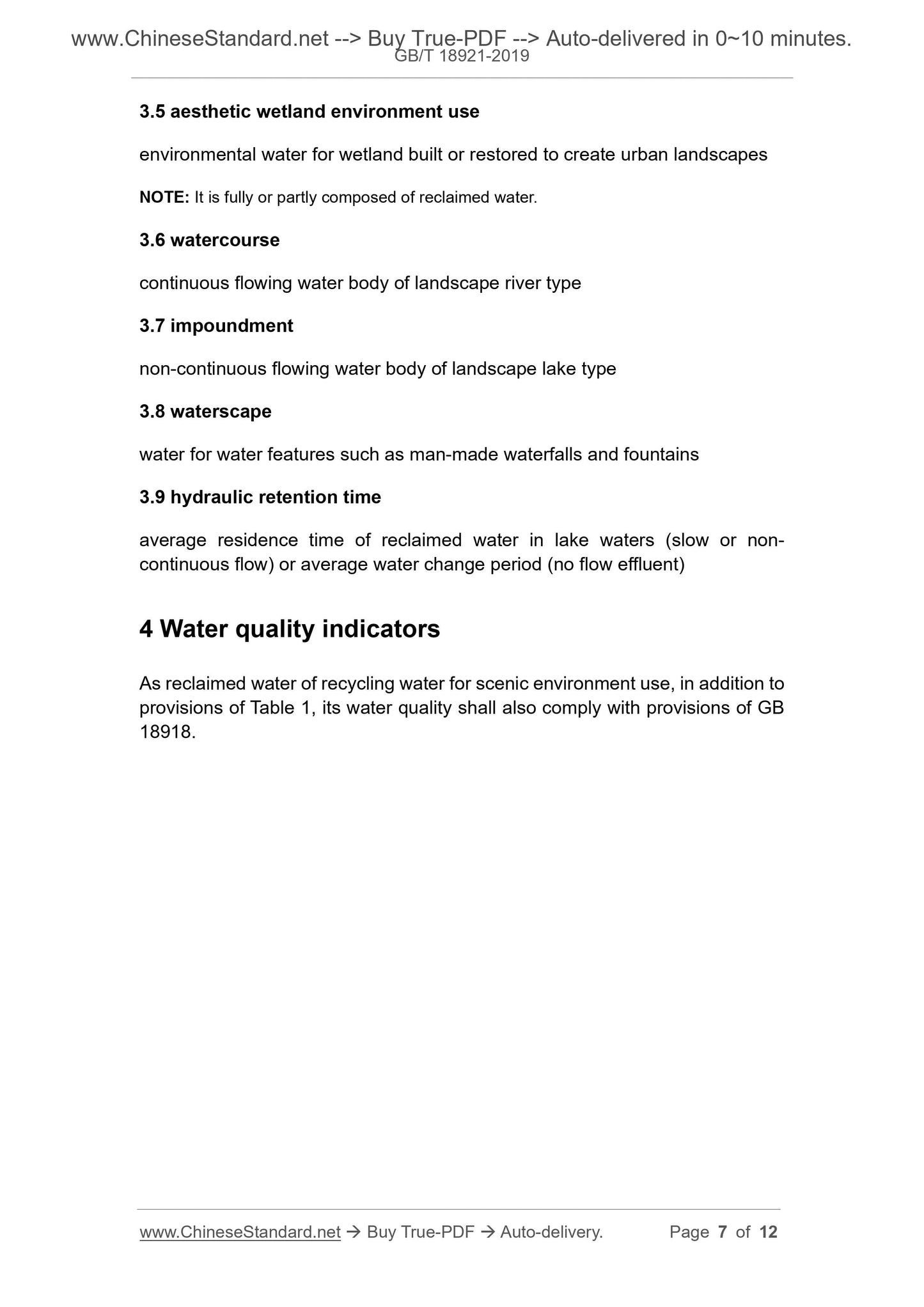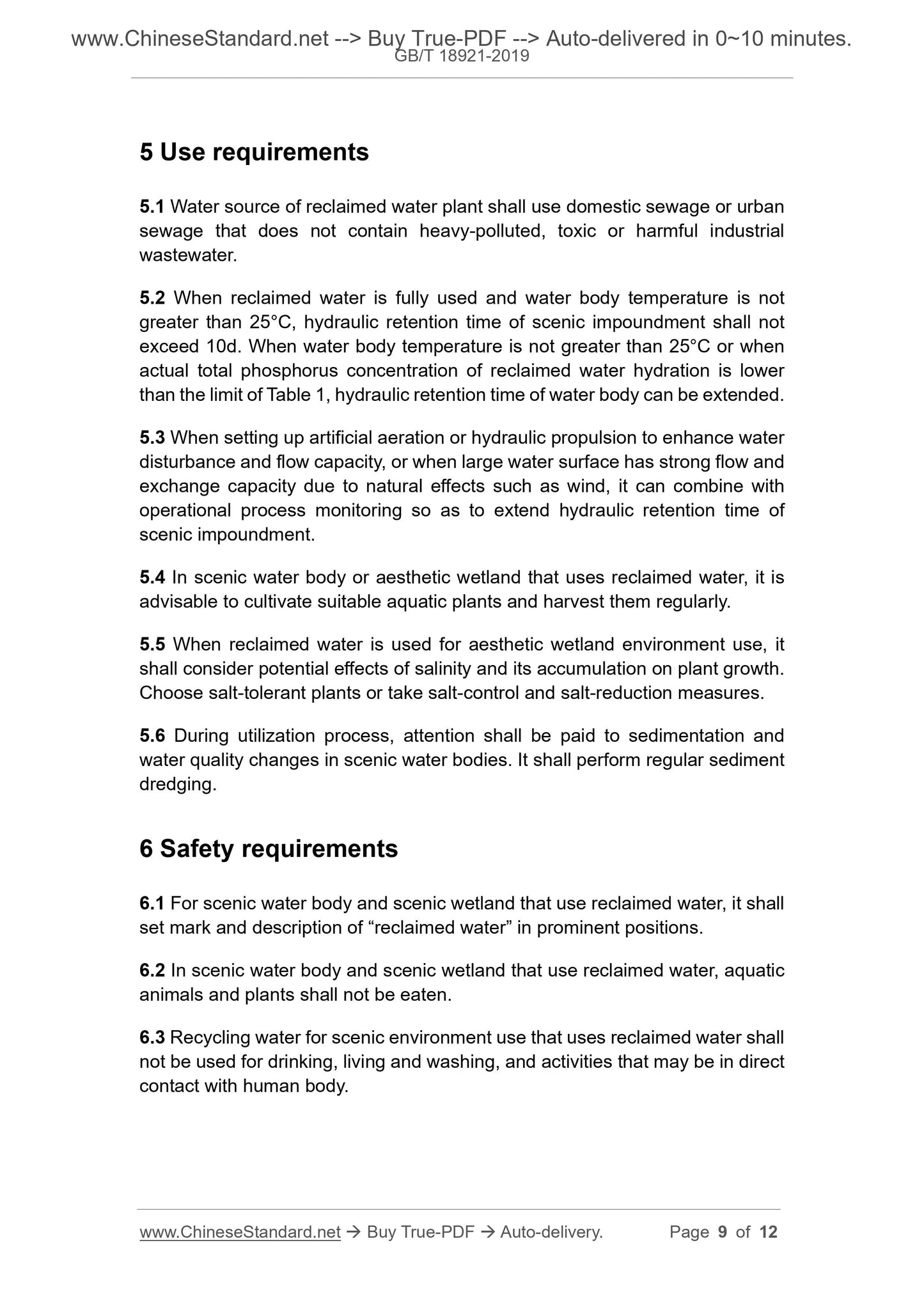1
/
of
6
www.ChineseStandard.us -- Field Test Asia Pte. Ltd.
GB/T 18921-2019 English PDF (GB/T18921-2019)
GB/T 18921-2019 English PDF (GB/T18921-2019)
Regular price
$150.00
Regular price
Sale price
$150.00
Unit price
/
per
Shipping calculated at checkout.
Couldn't load pickup availability
GB/T 18921-2019: The reuse of urban recycling water - Water quality standard for scenic environment use
Delivery: 9 seconds. Download (and Email) true-PDF + Invoice.Get Quotation: Click GB/T 18921-2019 (Self-service in 1-minute)
Newer / historical versions: GB/T 18921-2019
Preview True-PDF
Scope
This Standard specifies water quality indicators, use requirements, safetyrequirements, sampling and monitoring for reuse of urban recycling water -
scenic environment use.
This Standard is applicable to recycling water for scenic environment use.
Basic Data
| Standard ID | GB/T 18921-2019 (GB/T18921-2019) |
| Description (Translated English) | The reuse of urban recycling water - Water quality standard for scenic environment use |
| Sector / Industry | National Standard (Recommended) |
| Classification of Chinese Standard | P40 |
| Classification of International Standard | 13.060 |
| Word Count Estimation | 10,157 |
| Date of Issue | 2019-06-04 |
| Date of Implementation | 2020-05-01 |
| Issuing agency(ies) | State Administration for Market Regulation, China National Standardization Administration |
Share
